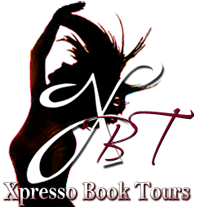
Title: DR. SEUSS'S HORSE MUSEUM
Author: Dr. Seuss & Andrew Joyner (Illustrations)
Pub. Date: September 3, 2019
Publisher: Random House Books for Young Readers
Formats: Hardcover, eBook
Pages: 80
Find it:
Goodreads, Amazon, Kindle, Audible, B&N, iBooks, Kobo, TBD
A never-before-published Dr. Seuss book about creating and looking at art!
Based on a manuscript and sketches discovered in 2013, this book is like a visit to a museum--with a horse as your guide!
Explore how different artists have seen horses, and maybe even find a new way of looking at them yourself. Discover full-color photographic art reproductions of pieces by Picasso, George Stubbs, Rosa Bonheur, Alexander Calder, Jacob Lawrence, Deborah Butterfield, Franz Marc, Jackson Pollock, and many others--all of which feature a horse! Young readers will find themselves delightfully transported by the engaging equines as they learn about the creative process and how to see art in new ways.
Taking inspiration from Dr. Seuss's original sketches, acclaimed illustrator Andrew Joyner has created a look that is both subtly Seussian and wholly his own. His whimsical illustrations are combined throughout with "real-life" art. Cameo appearances by classic Dr. Seuss characters (among them the Cat in the Hat, the Grinch, and Horton the Elephant) make Dr. Seuss's Horse Museum a playful picture book that is totally unique. Ideal for home or classroom use, it encourages critical thinking and makes a great gift for Seuss fans, artists, and horse lovers of all ages.
Publisher's Notes discuss the discovery of the manuscript and sketches, Dr. Seuss's interest in understanding modern art, the process of creating the book, and information about each of the artists and art reproductions in the book.
Review:
Take a playful and enlightening romp through Dr. Seuss's Horse Museum. What is the subject of this museum? The horse, of course! As you go through the Horse Museum, you are introduced to art in all of its forms from outline to abstract. The artwork presented in the Horse Museum is all real, showing depictions of horses from the Wei dynasty in China, Navajo artisans, Raphael, Freud, Kandinsky, Pollock and Seuss himself.
Dr. Seuss's Horse Museum is a wonderfully fun way to introduce children to art through a subject they love, horses! This book will get young minds thinking about what art is, how it makes them feel and instigates the imagination. Different styles of art are defined alongside the real examples and insights into what the artist might have imagined. The additional illustrations mirrored the techniques or feelings being shown. My three year old's favorite task was to see what the baby was doing on each page as they created artwork of their own. With insightful messages of finding art all around you and the positivity of being able to make art yourself, Dr. Seuss's Horse Museum is another wonderfully wacky book to add to the collection.
This book was received for free in return for an honest review.

Theodor Seuss Geisel was born 2 March 1904 in Springfield, MA. He graduated Dartmouth College in 1925, and proceeded on to Oxford University with the intent of acquiring a doctorate in literature. At Oxford he met Helen Palmer, who he wed in 1927. He returned from Europe in 1927, and began working for a magazine called Judge, the leading humor magazine in America at the time, submitting both cartoons and humorous articles for them. Additionally, he was submitting cartoons to Life, Vanity Fair and Liberty. In some of his works, he'd made reference to an insecticide called Flit. These references gained notice, and led to a contract to draw comic ads for Flit. This association lasted 17 years, gained him national exposure, and coined the catchphrase "Quick, Henry, the Flit!"
In 1936 on the way to a vaction in Europe, listening to the rhythm of the ship's engines, he came up with And to Think That I Saw It on Mulberry Street, which was then promptly rejected by the first 43 publishers he showed it to. Eventually in 1937 a friend published the book for him, and it went on to at least moderate success.
During WW II, Geisel joined the army and was sent to Hollywood. Captain Geisel would write for Frank Capra's Signal Corps Unit (for which he won the Legion of Merit) and do documentaries (he won Oscar's for Hitler Lives and Design for Death). He also created a cartoon called Gerald McBoing-Boing which also won him an Oscar.
In May of 1954, Life published a report concerning illiteracy among school children. The report said, among other things, that children were having trouble to read because their books were boring. This inspired Geisel's publisher, and prompted him to send Geisel a list of 400 words he felt were important, asked him to cut the list to 250 words (the publishers idea of how many words at one time a first grader could absorb), and write a book. Nine months later, Geisel, using 220 of the words given to him published The Cat in the Hat, which went on to instant success.
In 1960 Bennett Cerf bet Geisel $50 that he couldn't write an entire book using only fifty words. The result was Green Eggs and Ham. Cerf never paid the $50 from the bet.
Helen Palmer Geisel died in 1967. Theodor Geisel married Audrey Stone Diamond in 1968. Theodor Seuss Geisel died 24 September 1991.
Also worked under the pen name:
Theo Le Sieg
Website | Goodreads

Andrew Joyner is an internationally published illustrator and author. His popular books include The Terrible Plop, written by Ursula Dubosarsky. He lives in South Australia.
Website | Instagram | Goodreads
Week One:
9/2/2019- BookHounds Ya- Review
9/3/2019- 100 Pages A Day- Review
9/4/2019- Book-Keeping- Review
9/5/2019- Christen Krumm, Writer, Reader, Serious Coffee Drinker- Review
9/6/2019- Fictitious Fox- Review
Week Two:
9/9/2019- Inspired by Savannah- Review
9/10/2019- Lifestyle Of Me- Review
9/11/2019- Little Red Reads- Review
9/12/2019- two points of interest- Review
9/13/2019- Eli to the nth- Review








 RSS Feed
RSS Feed



